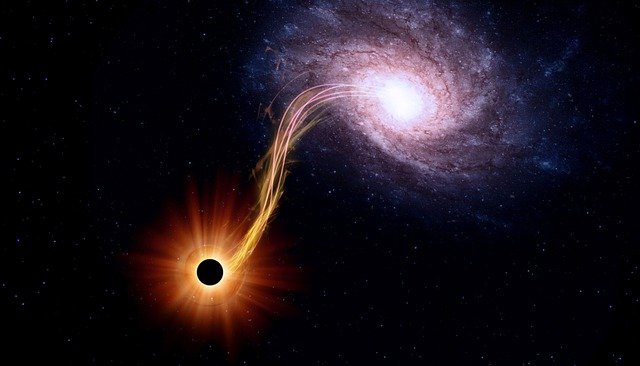What is a scientific theory? Theory vs. Law: Basics of the scientific method. Examples of scientific theories and scientific laws. Scientific theory and Law: What’s the difference?

Source : pixabay.com
In science, a theory is a well-substantiated explanation of some aspect of the natural world that is acquired through the scientific method, and repeatedly tested and confirmed through observation and experimentation. A theory is a systematic and logical explanation for a set of observations or phenomena. In contrast, a scientific law is a statement that describes a relationship that is observed to always be true, under a specific set of conditions. A scientific law is a concise, general statement that summarizes a wide range of observations and experiences.
The scientific method is a systematic and logical approach to discovering new knowledge about the world around us. It involves making observations, formulating a hypothesis (a tentative explanation for the observations), testing the hypothesis through experimentation and collecting data, and analyzing the results to determine whether the hypothesis is supported or not. If the results of the experiments support the hypothesis, it may become a theory. If the theory is repeatedly tested and supported through numerous experiments, it may eventually become a scientific law.
In summary, a theory is a well-substantiated explanation for a set of observations, while a law is a statement that describes a relationship that is consistently observed to be true under specific conditions.
What Is a Scientific Theory?
A scientific theory is a well-substantiated explanation of some aspect of the natural world that is acquired through the scientific method and repeatedly tested and confirmed through observation and experimentation. A theory is a systematic and logical explanation for a set of observations or phenomena.
In science, a theory is not just a guess or a hunch, but is an explanation that is supported by a significant amount of evidence. A theory must be able to be tested and evaluated through experimentation and observation, and it must be able to be modified or discarded if new evidence arises.
Examples of well-established scientific theories include the theory of evolution, the theory of gravitation, and the theory of relativity. These theories have been repeatedly tested and supported through a wide range of observations and experiments, and they have become widely accepted by the scientific community as explanations for a variety of phenomena.

Examples of Scientific Theories
The theory of evolution: This theory explains how species change and adapt over time through the process of natural selection. It is supported by a wide range of observations and evidence, including the fossil record, comparative anatomy, and molecular biology.
The theory of gravitation: This theory, first proposed by Isaac Newton, explains the force of gravity that attracts objects with mass towards one another. It has been repeatedly tested and supported through a variety of observations and experiments.
The theory of relativity: This theory, proposed by Albert Einstein, describes the relationship between space and time, and how they are affected by the presence of matter and energy. It has been supported through numerous experiments, including the famous experiment in which Einstein predicted that time would appear to slow down for an observer moving at a high speed relative to another observer.
The theory of the Big Bang: This theory explains the origin and evolution of the universe, and it is supported by a wide range of observations, including the cosmic microwave background radiation, the expansion of the universe, and the abundance of light elements.
What Is a Scientific Law?
A scientific law is a statement that describes a relationship that is consistently observed to be true under specific conditions. A scientific law is a concise, general statement that summarizes a wide range of observations and experiences.
Unlike a theory, which is a well-substantiated explanation for a set of observations, a scientific law is a simple and concise statement that describes the behavior of the natural world. A scientific law does not attempt to explain how or why a phenomenon occurs, but simply describes what is observed to be true.
Examples of scientific laws include the law of conservation of energy, the law of universal gravitation, and the laws of thermodynamics. These laws have been repeatedly tested and supported through a wide range of observations and experiments, and they are considered to be fundamental principles of the natural world.

Examples of Scientific Laws
The law of conservation of energy: This law states that energy cannot be created or destroyed, but can only be transformed from one form to another. This law has been supported through numerous experiments, and it is a fundamental principle of physics.
The law of universal gravitation: This law, first proposed by Isaac Newton, states that every object in the universe attracts every other object with a force that is directly proportional to the mass of the objects and inversely proportional to the square of the distance between them. This law has been repeatedly tested and supported through a wide range of observations and experiments.
The laws of thermodynamics: These laws describe the relationships between heat, work, and energy. The first law states that energy cannot be created or destroyed, only transformed from one form to another. The second law states that heat cannot be completely converted into work. These laws have been supported through numerous experiments and are considered to be fundamental principles of physics.
The law of large numbers: This law, which is a fundamental principle of probability theory, states that as the number of trials in a probability experiment increases, the actual ratio of outcomes will converge on the expected ratio of outcomes. This law has been supported through numerous experiments and is used to make predictions about the likelihood of certain events occurring.
Scientific Theory vs. Law: What’s the Difference?
In science, a theory is a well-substantiated explanation of some aspect of the natural world that is acquired through the scientific method and repeatedly tested and confirmed through observation and experimentation. A theory is a systematic and logical explanation for a set of observations or phenomena.
In contrast, a scientific law is a statement that describes a relationship that is consistently observed to be true under specific conditions. A scientific law is a concise, general statement that summarizes a wide range of observations and experiences. A scientific law does not attempt to explain how or why a phenomenon occurs, but simply describes what is observed to be true.
The main difference between a scientific theory and a scientific law is the level of explanation they provide. A theory is a more comprehensive and detailed explanation for a set of observations, while a law is a simple and concise statement that describes the behavior of the natural world.
It is important to note that both theories and laws are important parts of the scientific process, and they play different roles in our understanding of the natural world. Theories are used to explain a wide range of phenomena, while laws are used to make predictions about the behavior of the natural world under certain conditions.